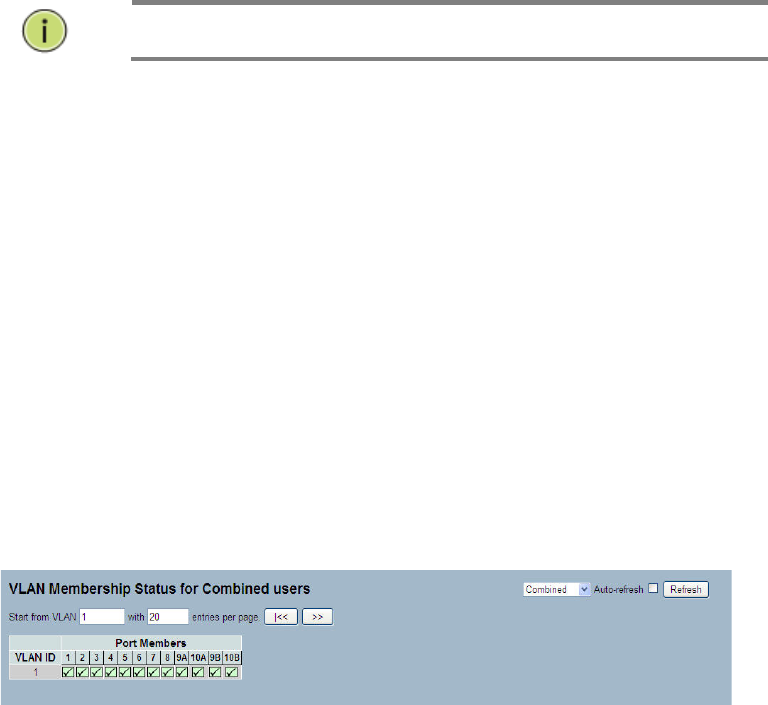
109
If Specific (the default value) is selected, a Port VLAN ID can be configured (see below).
Untagged frames received on the port are classified to the Port VLAN ID. If VLAN
awareness is disabled, all frames received on the port are classified to the Port VLAN ID. If
the classified VLAN ID of a frame transmitted on the port is different from the Port VLAN ID,
a VLAN tag with the classified VLAN ID is inserted in the frame.
Port VLAN ID :
Configures the VLAN identifier for the port. The allowed values are 1 through 4095. The
default value is 1.
NOTE: The port must be a member of the same VLAN as the
Port VLAN ID.
Buttons:
Save – Click to save changes.
Reset- Click to undo any changes made locally and revert to previously saved
values.
3-10.3 Switch Status
The Switch Status function gathers all VLAN status information and reports it by the order of
Static NAS MVRP MVP Voice VLAN MSTP GVRP Combined.
Web Interface
Displays VLAN membership status in the Web interface:
1. Click VLAN membership.
2. Specify the Static NAS, MVRP, MVP, Voice, VLAN, MSTP, GVRP
Combined.
3. Display membership information.
Figure 3-10.3: The VLAN Membership Status for Static user
Parameter description:
VLAN USER (You can scroll to select one kind of VLAN user as below:)
VLAN User module uses services of the VLAN management functionality to configure VLAN
memberships and VLAN port configurations such as PVID and UVID. Currently, we support
the following VLAN user types:
CLI/Web/SNMP : These are referred to as static.
NAS : NAS provides port-based authentication, which involves communications between a
Supplicant, Authenticator, and an Authentication Server.
MVRP : Multiple VLAN Registration Protocol (MVRP) allows dynamic registration and
deregistration of VLANs on ports on a VLAN bridged network.
GVRP : GARP VLAN Registration Protocol (GVRP) allows dynamic registration and
deregistration of VLANs on ports on a VLAN bridged network.
Voice VLAN : Voice VLAN is a VLAN configured specially for voice traffic typically originating
from IP phones.
MVR : MVR is used to eliminate the need to duplicate multicast traffic for subscribers in each
VLAN. Multicast traffic for all channels is sent only on a single (multicast) VLAN.
MSTP : The 802.1s Multiple Spanning Tree protocol (MSTP) uses VLANs to create multiple


















